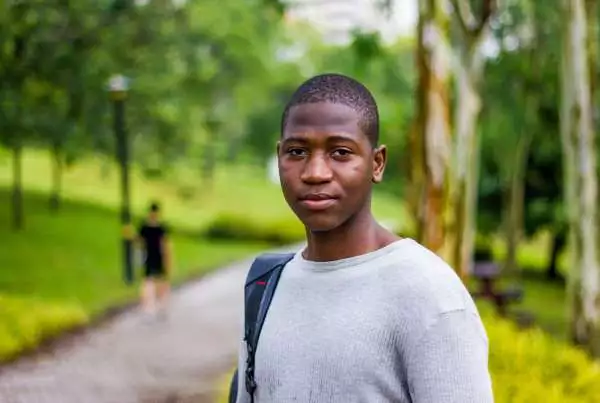Did you know that 8% of teens between the ages of 13–18 have an anxiety disorder? And did  you also know that of these teens, only 18% of them receive mental-health care?
you also know that of these teens, only 18% of them receive mental-health care?
Some anxiety is a function of being a human being. It’s not unusual for anxiety to present itself in predictable situations (going on a job interview, starting a new school, speaking up for ourselves), but for most, it fades as soon as the initial fear passes. Anxiety is our nervous system’s way of telling us we are overwhelmed and need to pause. Anxiety is also our sympathetic nervous system’s fight-or-flight response in action; the anxiety is the red flag letting us know we are emotionally under fire. If you don’t suffer from an anxiety disorder, chances are your parasympathetic nervous system will automatically engage, arresting the fight or flight response and engaging its remarkable rest-and-digest function. However, for someone who suffers from an anxiety disorder, the sympathetic nervous system gets stuck in the “on” position, forcing it to stay in its fight-or-flight response longer than is emotionally sustainable. The parasympathetic nervous system, aka, the rest-and-digest function of our bodies, gets shoved to the side and is unable to do its job.
How is anxiety usually treated?
Medication is one option typically given to anxiety sufferers. It is not a cure, but rather a means of managing the symptoms. Often patients are given:
Antidepressants
- SSRIs, Tricyclics, MAOIs, anti-anxiety medications
- Anti-anxiety drugs:
- Benzodiazepines
- Beta-blockers – which treat the physical symptoms of anxiety
Clinicians, on the other hand, use therapeutic modalities like:
- Cognitive Behavioral Therapy (CBT)
- Dialectical Behavioral Therapy (DBT)
- Exposure Based Behavioral Therapy
- EMDR
- Mindfulness Based Stress Reduction
In addition to treatment, you can also try any one of all of these tools to help manage anxiety:
1: Mindful breathing: Practice exhaling on a longer count than your inhale. This is a wonderful tool to use to bring the heart rate down, provide oxygen to the blood and to the lungs, and also engage the parasympathetic nervous system.
2: Visualization: Close your eyes and visualize a place that elicits a state of calm. It could be the beach, the mountains, a forest, being in the ocean, or doing something else that you love. This is a way of accessing one of your resources—something that calms you and engages your body’s nervous system.
3: Get active: Studies show that exercising every day will increase relaxation, reduce stress, and make you happier. Go endorphins! So, go to the gym, go for a run, do a strong yoga class, do some jumping jacks, skateboard, or roller skate.
4: Create a gratitude journal or a gratitude list. Write down 5 things you are grateful for and challenge yourself to write this list every single day. There’s been a recent Facebook chain going around, asking people to post three things a day for seven days that they’re grateful for and then tag three more people each day to do the same. It’s been a neat phenomenon to watch people share their gratitude.
5: Focus on a meaningful, goal orienting activity: playing a game with a friend, building something, creating art, or singing.
6: Accept that you are anxious. Accepting how you feel doesn’t mean you like it or are choosing to be anxious; it means accepting how things are in the present moment. If we obsess about how anxious we feel, our anxiety will increase. Ajhan Sumedo, a Buddhist monk, says, “Right now, it’s like this.” This phrase encourages acceptance and allows us to stay in the present. When we are anxious, we are stuck in the future.
Ignoring our anxiety or self-medicating to relieve our suffering, leaves us vulnerable to persistent dysregulation and despair. When we address anxiety and face it head on, we cultivate the development of self-regulatory techniques. With ample clinical support (when needed), the establishment and consistent use of self-regulatory tools, and a broad support system in place, things can and will get better.
Originally posted on August 22, 2014 @ 8:58 am






